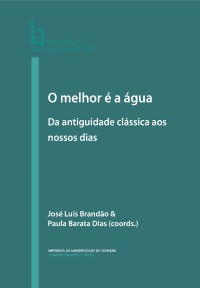Please use this identifier to cite or link to this item:
https://hdl.handle.net/10316.2/45106| DC Field | Value | Language |
|---|---|---|
| dc.contributor.author | Gomes, João Pedro | |
| dc.date.accessioned | 2019-01-17T00:25:20Z | |
| dc.date.accessioned | 2020-09-05T01:29:29Z | - |
| dc.date.available | 2019-01-17T00:25:20Z | |
| dc.date.available | 2020-09-05T01:29:29Z | - |
| dc.date.issued | 2018 | - |
| dc.identifier.isbn | 978-989-26-1567-7 | |
| dc.identifier.isbn | 978-989-26-1568-4 (PDF) | |
| dc.identifier.issn | 2182-8814 | |
| dc.identifier.uri | https://hdl.handle.net/10316.2/45106 | - |
| dc.description.abstract | Currently in a state of near architectural ruin, the Royal Aqueduct of Santa Clara represents the last great construction project associated with the Santa Clara-a-Nova monastery, and the most ambitious endeavour conceived by Manuel Alves Macomboa, one of the architects belonging to the University of Coimbra’s Reform project. Analyzing the projects designed by Macomboa and reading financial and bureaucratic documentation concerning the construction, along with observing the structures that survive today, allows us to characterize an eighteenth-century construction site, from the detailed forecast to the reformulation of the public contracts most advantageous to the promoter institution, revealing the major importance of water, conduction and usage in the daily life of the period in question. | eng |
| dc.description.abstract | Atualmente reduzido a uma quase-ruína arquitetónica, o Real Aqueduto de Santa Clara representou a última grande empreitada construtiva associada ao Mosteiro de Santa Clara-a-Nova e o projeto mais ambicioso saído das mãos de um dos arquitetos da reforma da Universidade de Coimbra, Manuel Alves Macomboa. A análise dos projetos debuxados por Macomboa, a leitura da documentação contabilística e burocrática resultante das obras, bem como a observação das estruturas que ainda hoje sobrevivem permitem caracterizar um estaleiro de obra no final do século XVIII, desde a pormenorizada projeção da obra até à reformulação de contratos públicos mais vantajosos para o promotor/responsável da obra, não deixando de evidenciar a importância que a captação, condução e disponibilização de água detinha no quotidiano da época. | por |
| dc.language.iso | por | - |
| dc.publisher | Imprensa da Universidade de Coimbra | por |
| dc.relation.ispartof | http://hdl.handle.net/10316.2/45094 | por |
| dc.rights | open access | - |
| dc.subject | Aqueduct | eng |
| dc.subject | University of Coimbra | eng |
| dc.subject | University Reform | eng |
| dc.subject | Macomboa | eng |
| dc.subject | Architecture | eng |
| dc.subject | Aqueduto | por |
| dc.subject | Universidade de Coimbra | por |
| dc.subject | Reforma da Universidade | por |
| dc.subject | Macomboa | por |
| dc.subject | Arquitetura | por |
| dc.title | O “Aqueduto do Real Mosteiro de Santa Clara”: aspetos da construção de um aqueduto no final do século XVIII | por |
| dc.title.alternative | The “Aqueduct of the Royal Monastery of Santa Clara”: aspects of the construction of an aqueduct in the late eighteenth century | eng |
| dc.type | bookPart | por |
| uc.publication.firstPage | 203 | - |
| uc.publication.lastPage | 225 | - |
| uc.publication.location | Coimbra | por |
| dc.identifier.doi | 10.14195/978-989-26-1568-4_11 | - |
| uc.publication.digCollection | PB | por |
| uc.publication.orderno | 11 | - |
| uc.publication.area | Artes e Humanidades | por |
| uc.publication.bookTitle | O melhor é a água: da antiguidade clássica aos nossos dias | - |
| uc.publication.manifest | https://dl.uc.pt/json/iiif/10316.2/45106/200738/manifest?manifest=/json/iiif/10316.2/45106/200738/manifest | - |
| uc.publication.thumbnail | https://dl.uc.pt/retrieve/11013901 | - |
| uc.publication.parentItemId | 55078 | - |
| uc.itemId | 68151 | - |
| item.grantfulltext | open | - |
| item.fulltext | With Fulltext | - |
| Appears in Collections: | O melhor é a água: da antiguidade clássica aos nossos dias | |
Files in This Item:
| File | Description | Size | Format | |
|---|---|---|---|---|
| o_aqueduto_do_real_mosteiro_de_santa_clara.pdf | 2.27 MB | Adobe PDF |  |
Items in DSpace are protected by copyright, with all rights reserved, unless otherwise indicated.
